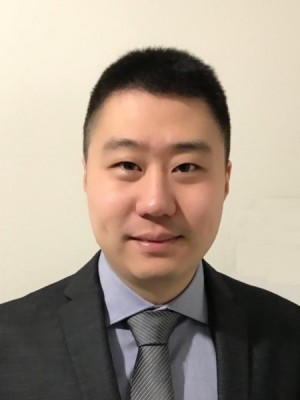Researchers have developed a novel way for liquid crystals to retain information about their movement, suggests a new study.
Using this method could advance technologies like memory devices and sensors, as well as pave the way to future soft materials that are both smart and flexible.
Liquid crystals, which are used in liquid crystal display (LCD) screens for TVs and phones, utilize their molecules to mimic the properties of both liquids and solids, giving them unique properties. While soft materials like liquids, gels and polymers have been widely used for their easy-to-process structures and lightweight properties, they tend to deform easily and often require replacement.
Everyday materials are made of molecules that align themselves in preferred directions. But liquid crystals could become much more useful if their molecules are all facing in one direction - obtaining what is called polar order.
That can be difficult to do in soft materials, said Xiaoguang Wang, co-author of the study and an assistant professor in chemical and biomolecular engineering at The Ohio State University.
 "Soft matter can't compete with existing solid-state storage in speed, reliability or miniaturization, so the question becomes how might we control its internal structure to make it competitive or comparable to traditional hard materials," said Wang.
"Soft matter can't compete with existing solid-state storage in speed, reliability or miniaturization, so the question becomes how might we control its internal structure to make it competitive or comparable to traditional hard materials," said Wang.
In searching for a solution, researchers found that they could program the movement of liquid crystals with the help of external forces, such as liquid or electricity. In this study's case, water droplets were used to determine if scientists could influence the liquid crystal's interface.
First, the team etched pillars into a piece of silicon and infused liquid crystals between the spaces. Then a layer of water was introduced on top.
Similarly to how a magnet's north and south poles would react to a magnetic field, researchers saw that depending on where the droplet was moved, the molecules would immediately respond by pointing in that direction. By moving the droplet over the liquid crystals a second time, that movement could then be changed and pointed in a new direction, said Wang.
Significantly, the experiment also revealed that liquid crystal molecules could be taught to remember their orientation, opening up new ways for soft materials to exchange information without the need for electronics. "It can memorize the directionality of the information that we write into it, which means that our vector-based system operates like a memory device," said Wang.
The study was recently published in Nature Physics.
While scientists are still working to incorporate this method into bigger projects, gaining the ability to control the position of liquid crystals' molecules could lead not only to new functionalities for all sorts of technologies, but also new types of physics, said Ufuoma Kara, lead author of the study and a former graduate research associate at Ohio State.
"By imposing a greater level of polarity within these liquid crystal materials, we can explore new levels of applications," he said. "Part of that includes expanding the amount of knowledge able to be embedded in their systems."
While it's no easy feat, being able to cultivate materials with such abilities on a larger scale would suggest that the next generation of liquid crystals could one day act as both super-small computer processors and vast, reprogrammable memory storage devices.
"There's something very exciting in this discovery, and I think it's a great foundation to spark some curiosity in young people who want to pursue this type of science," said Kara.
Other co-authors include Boyuan Chen, Rajdeep Mamtani, Yang Xu, Alan Weible, Eric Boerner and Zhan Yang from Ohio State, as well as Simon Čopar and Uroš Tkalec from the University of Ljubljana, Shucong Li from the Georgia Institute of Technology, Yuxing Yao from the California Institute of Technology, and Robin L. B. Selinger from Kent State University.
This work is supported by the National Science Foundation, the Ohio State Materials Research Seed Grant Program, the Center for Emergent Materials, the Center for Exploration of Novel Complex Materials, and the Institute for Materials Research.






